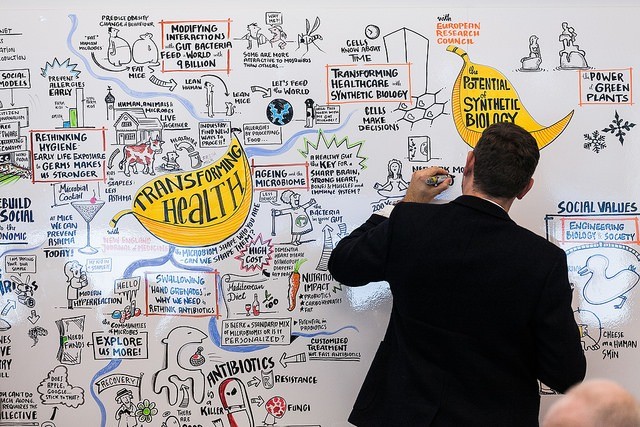How conventional plant breeding has evolved in the digital age
While I generally have a pretty decent memory, my recollections of high school biology in the early 1980s consists of trying to get a microscope to focus properly so that I could see an onion skin cell. Rarely could I focus the microscope and all I saw were blurry blobs. Thankfully, others more skilled with microscopes than I have taken their passion for biology beyond high school and have been hard at work advancing the science. In fact, the research of biology has come to a point of evolution, and over the past century a new branch of biology be known as synthetic biology or ‘synbio’ has developed.
So, what exactly is synbio?
Well, in its simplest, it’s an integration of biology and engineering whereby scientists are able to reconstruct what exists in nature. Its applications have impacts in agriculture, chemistry, computer science and medicine. Through the application of computing technology advances and organic chemistry, scientists are able to design genes or organisms to act in a very specific way. This is a natural evolution of conventional plant breeding in an increasingly digital age. One synbio application in medical development is specifically designed microbes to target specific diseases, such as the treatment of cancer. You can learn more about synbio at the Synthetic Biology Project.
What could synthetic biology mean for agriculture? While our crops are more than just the grains, seeds and kernel we eat, synbio could substantially impact the use of non-food plant materials such as flax straw or forestry waste for biofuels. Plant materials are already used to create ethanol for blending with gasoline, known as biomass. With byproducts like flax straw or waste wood, the cellular structure is so strong that it’s often not energy efficient to break down the flax or wood for biomass. Using high amounts of energy to create a renewable energy product partially defeats the purpose of creating a renewable fuel source.
Creating synbio ag for a sustainable future
One way to resolve the issue of high energy consumption to convert biomass to fuel is through the use of synbio. Synbio can be utilized to develop new flax varieties or tree varieties that have lower plant fiber strengths. Flax straw is very durable, which creates all kinds of challenges for farmers. The straw is so sturdy it often is burnt as a means of getting rid of it. With synbio, it would be possible to create new flax varieties that have reduced fiber strength, which would make it more suitable for conversion to ethanol.
In terms of creating new tree varieties, it would be possible to breed rapidly growing trees on land that is marginal in terms of its ability to produce food. These trees could be harvested and used as biomass for renewable energy purposes, again lowering the energy required to convert waste wood products into ethanol.
As digital technology and genomic knowledge advance, it’s going to be increasingly possible to engineer plants to be more efficient. With a changing climate synbio plants that are water efficient could benefit regions struggling with declining moisture. Another example is to increase plants nutrient efficiencies helping to reduce the amounts of fertilizer needed. It is often the case in developing countries that access to required fertilizer amounts are limited. Access to synbio crops may not only help developing countries improve their agronomics, food and fuel security but could also reduce some of the economic stresses of agriculture and a changing world.
Who knows, the day may not be far off when high school biology students no longer struggle to see an onion cell, but are rather using synbio technology that allows us to chop an onion without our eyes burning.


